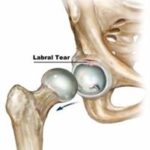Bursitis around Knee
The Knee Joint mainly being bony can predispose the tendons passing around it to frictional injuries. So the knee joint is provided with cushioning bursas all around the joint. All together 11 bursae surround the knee joint. The bursae most commonly subjected to inflammation are the-
- Prepatellar bursa,
- Infrapatellar bursa,
- Pes Anserinus bursa,
- Suprapatellar bursa.
A bursa is a synovial fluid-filled thin sac that allows different tissues such as muscle, tendon, and skin to slide over bony surfaces without friction. A bursa is normally very thin and it can get inflamed and irritated easily. This is what is known as bursitis.
The “Prepatellar bursa” lies between the patella and overlying skin. Prepatellar bursitis is also referred to as “Housemaid’s Knee”, as the condition was seen in housemaids who kneel for an extended period of time for cleaning the floor. Prepatellar bursitis is common in professions such as gardeners, roofers, plumbers, etc.
The “Infrapatellar bursitis” also referred to as “Clergyman’s Knee” as was seen in priests worshipping on knees for an extended period of time. The infrapatellar bursa consists of two bursae, one superficially between the patella tendon (below the kneecap) and the skin and the second deep sandwiched between the patella tendon and tibia bone (shin). It can occur concurrently with a condition called “Jumper’s Knee”, which involves repetitive strain and irritation to the patella tendon.
The third most common knee bursitis, “Pes Anserinus Bursitis”, occurs on the medial side of the knee where the common tendon of gracilis, sartorius, and semitendinosus inserts. It usually affects middle-aged women and overweight individuals.
“Suprapatellar bursitis” occurs above the patella. The Suprapatellar bursa extends superiorly from beneath the patella under the quadriceps muscle. It can be inflamed from acute trauma like fall or direct hit or repetitive microtrauma like running activities.
Causes of Bursitis around Knee
The common factors that can irritate a bursa include:
- Direct trauma or blow to the knee.
- Frequent falls on the knee.
- Repeated pressure on the knee (e.g. from activities that entail prolonged periods of kneeling) or repetitive minor trauma to the knee.
- Knee Arthritis – bursitis can be associated with conditions such as gout, rheumatoid arthritis, and osteoarthritis.
Symptoms of Bursitis around Knee
The symptoms of knee bursitis include:
- Localized pain and tenderness
- Swelling over, above, or below the kneecap according to bursa involved
- Limited range of motion of the knee
- Redness and warmth at the site of the bursa
- The aggravating factors include kneeling, crouching, repetitive bending or squatting and symptoms can be relieved when sitting still
Diagnosis
On examination, the physiotherapist will observe for signs and symptoms related to bursitis. The location will determine the bursa involved. Clinic findings are sufficient to diagnose the condition. If symptoms don’t resolve in a couple of weeks, a higher investigation may be needed.
Treatment of Bursitis around Knee
The Physiotherapist must do the biomechanical analysis to determine the causing factor of bursitis. Factors may include muscle weakness, tightness, pain inhibition, leg length discrepancy, training techniques, and more.
Physiotherapy treatment:
In most cases, the patient starts to feel better within a few weeks of treatment.
The Physiotherapy Treatment aims at:
- Reducing pain and inflammation,
- Normalize knee joint range of motion.
- Strengthening the knee muscles: quadriceps and hamstrings.
- Strengthening the complete lower limb muscles
- Normalize the muscle lengths/ stretching exercises
- Improving proprioception and balance.
- Improving overall functionality in activities like walking, running, squatting, and jumping,
- Minimize the chances of re-aggravation.
NSAIDs can be prescribed in conjunction with physiotherapy to help alleviate the pain and swelling. If the bursa becomes infected or if the symptoms persist for a prolonged period the doctor may recommend aspirating the bursa.
Alternatively, the doctor may recommend an injection of corticosteroid mixed with a local anesthetic.
If an infection is suspected, antibiotics may be prescribed.
Surgery
In persistent and recurrent cases, surgical removal of the bursa may be recommended.
Risks of knee surgery include infection, persistent instability and pain, stiffness, and difficulty returning to your previous level of activity though not many cases report any complication.
Post-Surgical Rehabilitation
For successful and quick outcome results, post-operative knee rehabilitation is one of the most important and often neglected aspects of knee surgery.
The physiotherapy rehabilitation focuses on restoring full knee motion, strength, power and endurance, balance and proprioception, and agility training that is individualized to specific sporting or functional needs.
Prevention
Knee bursitis can be prevented by maintaining the flexibility of structures around the knee. Avoiding or maintaining balance in activities and rest in kneeling activity is equally important. Ice after excessive kneeling is recommended to avoid an inflammatory response, which is the first stage of bursitis. Weight management should be considered as a long-term preventative measure.





